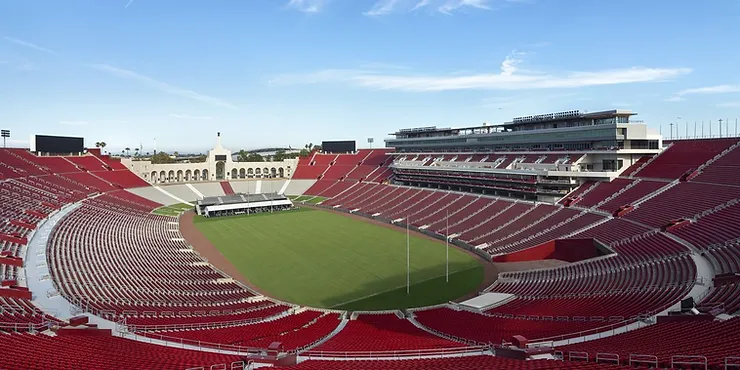By: Alicia Chen
The ever-changing Los Angeles Coliseum has been altered to accommodate all sorts of events throughout its history.
Frank Guridy, a professor who teaches at Columbia University, stated that, “The Coliseum wasn’t built for just one purpose. It’s a good, old-fashioned, single-tiered facility big enough to accommodate a bunch of different things.”
Sonja Henie, a figure skating champion, was invited to the stadium in the Summer of 1936 to perform. Using various strategies, engineers created an 80-foot-long ice rink. Unfortunately, however, the performance had to be canceled, as the ice would not hold up against the fiery June sun.
In 1944, a show honoring World War ll was held at the Coliseum, depicting a battle on a South Pacific Island. The performance was made possible by cooperation between Hollywood and the military.
In the late 50s, the Dodgers claimed the Coliseum as their temporary home.
But despite their success, Scott Lupold, a field manager at the stadium, can’t help but feel squeamish every time he sees the field getting torn down, every time the grass withers under the stomping heels of thousands.
In efforts to keep the grass alive, employees have tried using an array of methods: for example, trying to cover it with wood shavings, plywood, carpeting, and more. In 1974, a promoter told the Los Angeles Times, “We laid plastic down over the grass but it ripped in several places and the Coliseum drains were plugged with dirt. You know what plumbers cost.”
Seeing that nothing could protect the grass, management switched to an entirely different tactic. Because the Coliseum was almost always booked full, officials gave up on keeping the grass healthy and instead chose to tear the grass down after every event and replace it with new rolls of grass that could accommodate events in just a few days.
Lupold stated, “We’ve got multiple fields being grown out there for different events. We know what we’re getting and we know how to get it to a point where it’s ready to roll.”
He added, “We’ve done a lot of these things with concerts and replaced the field on really short windows. Knock on wood, we’ve been pretty good at pulling it off.”
Using this technique, engineers at NASCAR were able to cover the floor of the stadium with around 14,000 cubic yards of asphalt without having to worry about the grass. According to Lupold, “Anything that’s going to be out there for any length of time, when coupled with a lot of weight…the turf is pretty much toast underneath.”
But, it all comes at a cost. Replacing the old turf with new turf can cost hundreds of thousands of dollars, as in order for the new turf to grow rapidly, thick rolls, which are extremely expensive, must be purchased.
The Coliseum has had its share of struggles and problems, but one thing that will stay the same is that it will always be a location that holds many historical moments, and many happy memories.











